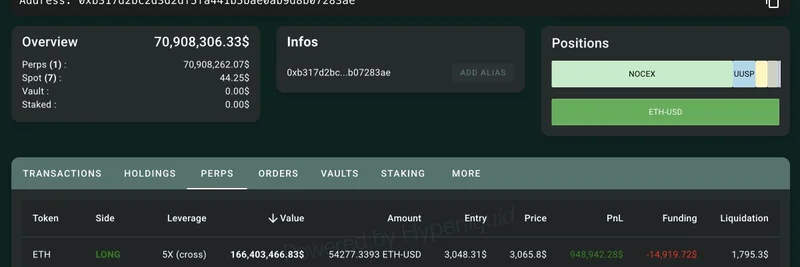import { Image } from 'astro:assets';
Hey there, crypto enthusiasts! If you’ve been keeping an eye on the blockchain world, you might have stumbled across a concerning tweet from BlockSec on July 9, 2025. The team dropped a bombshell about a potential compromise of GMX’s order-keeper account. Let’s break it down in a way that’s easy to digest, even if you’re new to the crypto scene.
What Happened with GMX’s Order Keeper?
According to BlockSec, the order-keeper account (with the address 0xd4266f8f82f7405429ee18559e548979d49160f3) might have been hacked. For those unfamiliar, GMX is a decentralized finance (DeFi) platform known for its perpetual futures trading. The “order keeper” is like a trusty bot that helps execute trades and manage orders on the platform. But in this case, it seems an attacker found a sneaky way in.
The attack involved passing a contract address as the first parameter in the executeDecreaseOrder function. Then, the attacker used a technique called reentrancy to pull off the exploit. If that sounds like gibberish, don’t worry—we’ll explain it shortly!
What’s a Reentrancy Attack?
A reentrancy attack is a sneaky trick used in smart contracts (the code that powers blockchain apps). Imagine you’re at a bank, and you ask to withdraw money. Normally, the bank checks your balance, gives you the cash, and updates your account. But in a reentrancy attack, a hacker tricks the system into letting them withdraw money again before the account balance is updated. This can drain funds until the contract runs dry—pretty scary, right?
This isn’t a new tactic. Back in 2016, the infamous DAO hack lost $60 million due to a similar vulnerability, as explained in this QuickNode guide. The GMX incident seems to follow a similar playbook, showing that even advanced platforms can be targets.
How Did the Attacker Pull This Off?
BlockSec’s initial analysis suggests the attacker exploited the two-step order execution process that GMX uses. In GMX’s system, orders are created first and then executed by keepers (those bots we mentioned). The attacker likely inserted a malicious contract address, which allowed them to re-enter the executeDecreaseOrder function multiple times. This reentrancy let them manipulate the system before it could lock down, potentially siphoning off funds.
To get a better grasp of how GMX works, check out this video from Cyfrin, which dives into the roles of keepers and the order process. It’s a great way to see where things might have gone wrong.
What Does This Mean for GMX and DeFi?
This incident is a wake-up call for the DeFi space. GMX is a popular platform, and a compromise like this could shake user confidence. BlockSec’s expertise in blockchain security (you can explore their work on blocksec.com) highlights how critical it is to patch vulnerabilities. For now, it’s unclear how much was lost, but the community is likely scrambling to assess the damage.
If you’re a blockchain practitioner or just a curious meme token fan, this event underscores the importance of staying informed. Platforms like meme-insider.com are here to help you keep up with the latest, whether it’s DeFi hacks or the next big meme coin trend.
Looking Ahead
As of 11:56 PM JST on July 9, 2025, this story is still unfolding. BlockSec’s tweet is an early warning, and more details will likely emerge as investigators dig deeper. For now, it’s a reminder to double-check the projects you’re involved with and understand the risks of smart contract bugs.
Got questions about this hack or want to dive deeper into blockchain security? Drop a comment below or explore our knowledge base at meme-insider.com for more insights. Stay safe out there, crypto fam!



